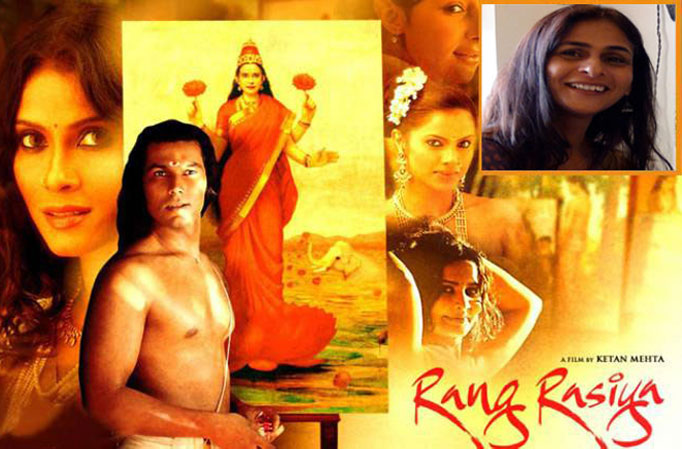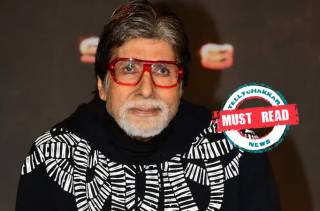Submitted by
Gayatri Gauri
on
Fri, 11/07/2014 - 11:05

The male gaze can be beautiful. The human form can be worthy of worship. Especially when it is captured in a timeless painting. Raja Ravi Varma proved this in the 19th century when he gave God a face. The acclaimed director of “Mirch Masala”, Ketan Mehta, tells the controversial artist’s colourful story by turning the canvas of cinema into a celebration of art and a voice of freedom.
Rang Rasiya is as visually breathtaking and bold as the artist’s work.
Indian filmmakers and the censor board have always shied away from nudity on screen. Rang Rasiya will probably be the landmark film to change that, having awaited the Censor’s approval since 2008.A woman’s bare breast is shown sans any vulgarity, thanks to a very comfortable and sensuous Nandana Sen and wonderful sensitivity in direction and Anil Mehta’s cinematography. The film’s uninhibited take does not stop there. At one point, both Randeep Hooda and Nandana are shown, lying completely nude, their bodies covered in paint. The song and choreography accompanying the sequence is like poetry in motion, with every single frame, which mesmerizes and hypnotizes you into the world of an artist.
The film begins in today’s world where a dramatic and violent riot disrupts an art auction selling Raja Ravi Varma’s paintings. The story cuts back to 1890s when a similar riot takes place and Raja Ravi Varma (Hooda) is arrested and tried in court for painting a half naked woman, Sugandha (Nandana). More flashbacks take us to Varma’s journey that ends up in the court, shamed and powerless. The film, based on a fictitious Marathi novel by Ranjit Desai, does not claim to be an autobiography. It cleverly uses the artist’s life to make its point on the freedom denied to artists in India, be it Raja Ravi Varma or M F Hussain who paid a heavy price for their freedom of artistic expression.
We see Varma, his character shown in all shades of grey, transform from a long haired playboyish husband of a princess in a village in Kerala to a court artist given the title of “Raja” to a well groomed and suited man in Mumbai. Initially, the film takes a while to be believable in its period settings and old world costumes. But post interval when the story takes a dramatic turn, the exquisitely crafted scenes, the crisp and powerful dialogues, the tight focus on the downfall of a man who made religion accessible to the masses through his printing press, enchants and engages, if not shock with its sensational material.
A particular scene showcasing the making of Dadabhai Phalke, the father of cinema, makes a telling remark, most relevant today…. “cinema…ise soch samajh kar istemaal karna.”
While clearly, the writing, direction, the camera’s sweeping magic, the tight edit and the all encompassing music and lyrics take centre stage, both the main actors, Randeep Hooda and Nandana Sen hold their own in sensuousness and controlled performance. Hooda essays a detached artist deftly,to his feminine and emotional muse played gracefully by Sen. Feyna Wazher as Varma’s devoted fan, is noticeable in her pretty screen presence.
If cinema is a canvas, Ketan Mehta’s Rang Rasiya is an aesthetic and relevant work of art.
(The writer tries to make peace with her own filmmaking nightmares, of being a scriptwriter, actor and assisting film icons by moonlighting as a film journalist.http://gayatrigauri.blogspot.in)
Like

0
Love

0
Haha

0
Yay

0
Wow

0
Sad

0
Angry

0
.png)









Add new comment